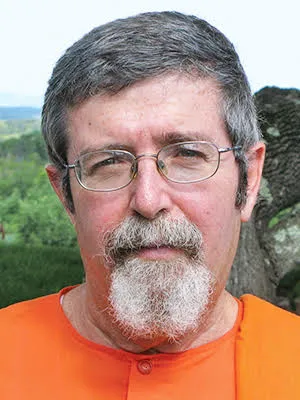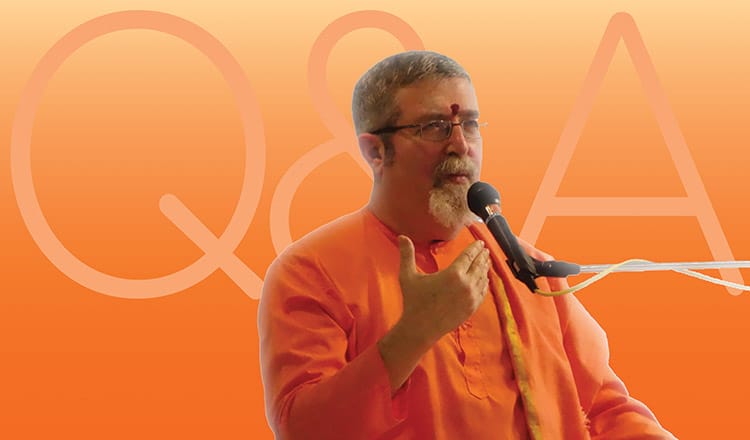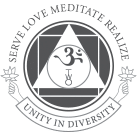Sivananda Bahamas Blog
Expand Your Horizons …
Our Blog
To Realize the Self You First Must Become Selfless
Question: What would be the most practical advice for one who wants to realize the Self?
Answer: First of all, we need to keep in mind that it is incorrect to say that only a few, rare people have the desire to realize the Self, to know their own essential nature. The truth is that every single human being journeys toward that goal. The only difference is that some journey consciously and some journey unconsciously. Those who journey consciously are called yogis and those who journey unconsciously are called ordinary people. All of us, however, are moving toward the realization of the Self, and this movement follows a certain order - karma yoga, bhakti yoga, raja yoga and jnana yoga.
Karma yoga means the yoga of selfless service, and selflessness is the first thing to be developed. Living for the welfare of other beings means we have to change our habit of wanting everything to be for ourselves. In karma yoga we turn this around; we learn to live and act for the welfare of others. We do this service with a special attitude, meaning we do not expect a reward for our actions. We do not expect to receive the fruits of our actions, which makes this type of activity selfless. We culminate the practice of karma yoga by offering the action itself and the fruits of the action to Ishvara, to the Supreme Being. Doing this type of activity eliminates the impurity of the heart, which is selfishness, and prepares us for a higher yoga, which is called bhakti yoga.
Bhakti yoga is the yoga of divine love. At first that love is directed toward all of our fellow beings, but then it is focused on Ishvara, or the Supreme Being, or God, which is the reality behind the phenomenal world and the phenomenal existence. It is the creator, the preserver of creation, and the destroyer of creation. God is the inner dweller who sits within our heart and from there rules the universe. Without God dwelling in our heart, we could not even exist. Bhakti yoga is the practice of directing love toward Ishvara or God, and it purifies the mind of its outgoing tendencies, of being turbulent and scattered. When we practice this yoga we prepare ourselves for the yoga of meditation, or raja yoga.
When we enter into raja yoga we are learning to do two things - to make our mind one-pointed and to meditate. We go through all the different levels of meditation, up to the highest levels, which are the levels of samadhi. For most people this process, generally speaking, follows a certain ladder of eight steps which are causal by nature, meaning one step leads to another. You cannot skip steps, so real raja yogis will not skip the first two steps, the yamas and niyamas, which are the ethical basis of raja yoga. If they skip them they cannot be successful in the subsequent steps because mastery of one step leads you to the next. Those rare people who follow the steps properly attain the higher levels of raja yoga, the levels of deep meditation and Samadhi, or super-consciousness, which is a preparation for jnana yoga, the highest yoga.
Jnana yoga is the yoga of wisdom or the yoga of knowledge because it teaches us how to liberate ourselves from samsara, from this infinite ocean of misery. Samsara consists of birth, the in-between which basically is a mode of existence with different grades of misery, and death, and then an existence after death in different levels - some of them nicer than others. Then we are born again, and on and on in a vicious cycle. This ocean of suffering, though, is sugar-coated, meaning it appears to be a great existence even though the bitter experience of samsara lies just beneath the sugar coating. Most people cannot see this, so they just revolve in this cycle of misery. Then one day we wake up. We get the desire to liberate ourselves from this mode of existence and to enter into the realm of truth.
The realm of truth is where we are all supposed to be, so it is called the realm of our true nature. It is a beautiful, glorious, blissful, harmonious, wise and extraordinary realm. It is the realm of the Atma or the Self. In jnana yoga we learn how to exit samsara and enter into this realm, an achievement that is called Self-realization or moksha or spiritual liberation. This exit from samsara is a process of wisdom and knowledge so it is called jnana yoga, or the yoga of wisdom. It is the culmination of the whole process of yoga. Every step in this process is absolutely necessary, so we start our journey to Self-realization with the most fundamental yoga, with karma yoga. A jnana yogi is a person who is a master of karma yoga, a master of bhakti yoga, and a master of raja yoga. Only such a person can enter the path of jnana yoga or the yoga of knowledge.
You may ask, where is hatha yoga? Hatha yoga is a sub-school of the raja yoga school. Where is kudalini yoga? Kundalini yoga is another sub-school of raja yoga. The same is true with mantra yoga and with nada yoga, the yoga of sound. When you practice raja yoga, you go through all of these practices of mantra yoga, kundalini yoga, hatha yoga and so on. Now some people may say, oh this is difficult and this is long, but it is neither difficult nor long. Rather, it is samsara, the infinite lives of suffering and misery, that is long. Yoga is called the short path because you can realize the Self in one lifetime if you exert, if you are sincere, if you have a good guru. It is called the short path because it can help us to exit endless samsara.
Exiting samsara does not mean that only you exit, because if the motivation behind yoga is egotistic the Self cannot be realized. Self-realization is not ego realization; it is the realization of our true nature, which is ultimate altruism. A realized person loves all beings as his own self. Not intellectually, but truly. These people have what we call ultimate empathy. Ultimate empathy means they really feel for every single being within this creation the way a good mother feels for her own child. Therefore, when these beings realize the Self and exit samsara, they have only one thing in mind - to help everyone else. You have people like Swami Vishnudevananda, who more or less sacrificed his life for every single person on this planet, and Swami Sivananda, who did everything in his capacity to teach people how to practice yoga in the easiest possible way. Swami Sivananda definitely wanted to save all of us from samsara. He wrote so many books. He taught yoga in such a simple way that everyone could practice, and he was actually quite successful. All these people are very compassionate by nature and they do everything in their capacity to help everyone, and they have the capacity to help. There are also people who want to help but don't have the capacity.
The only problem these great yogis have is that we have free choice, and most of the time our choices are not very good. There is a universal law that the free choice of human beings cannot be violated, so even great yogis like Swami Sivananda must allow us to make mistakes. The great yogis who are guiding us, though, will try to persuade us in a kind way and point us toward better choices. Still, the choice is free, and therefore even great beings like Lord Jesus, like Lord Buddha, like Moses, like Muhammad - all these great beings who come to the planet Earth - are not able to save all of humanity from samsara because of two factors: one is the factor of evolution - everyone has the right to go through the complete process of evolution - and the other is this factor of free choice that cannot be violated. When we ourselves come to the point where we have a better comprehension of our situation, and we desire to practice yoga and to realize the Self, it is a very good thing, and such an opportunity should not be missed.

Swami Swaroopananda is a senior disciple of Swami Vishnudevananda. A practicing yogi from a very young age, Swami Swaroopananda has dedicated his life to the practice and teaching of yoga. He taught in Yoga Teacher Training Courses around the world and is currently teaching advanced yoga philosophy courses and lectures internationally. He is Director of the Sivananda Ashram Yoga Retreat and acharya (spiritual director) for the Sivananda centers and ashrams in the Bahamas and the Middle East. He is a member of the Board of Directors of the International Sivananda Yoga Vedanta Centres.
Upcoming Courses
In honor of the Sivananda lineage and Swami Swaroopananda's birthday, we invite all guests, friends, and residents of the ashram to come together for a celebration.
During this special time of year we invite you to join us in celebrating wisdom, love, compassion, and the transcendence of artificial barriers.








